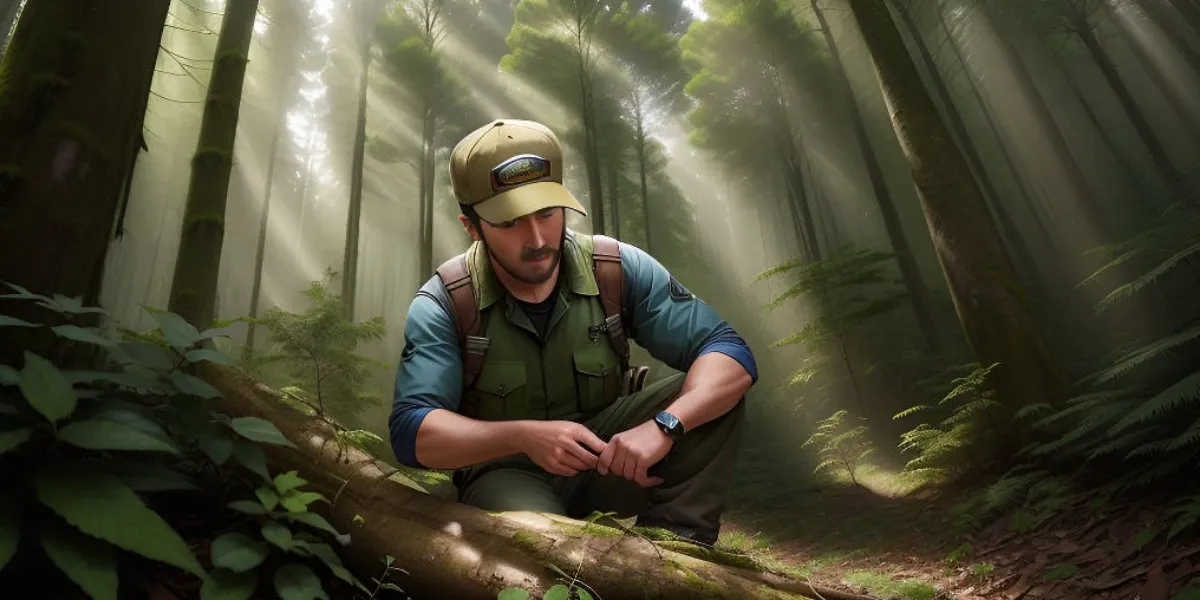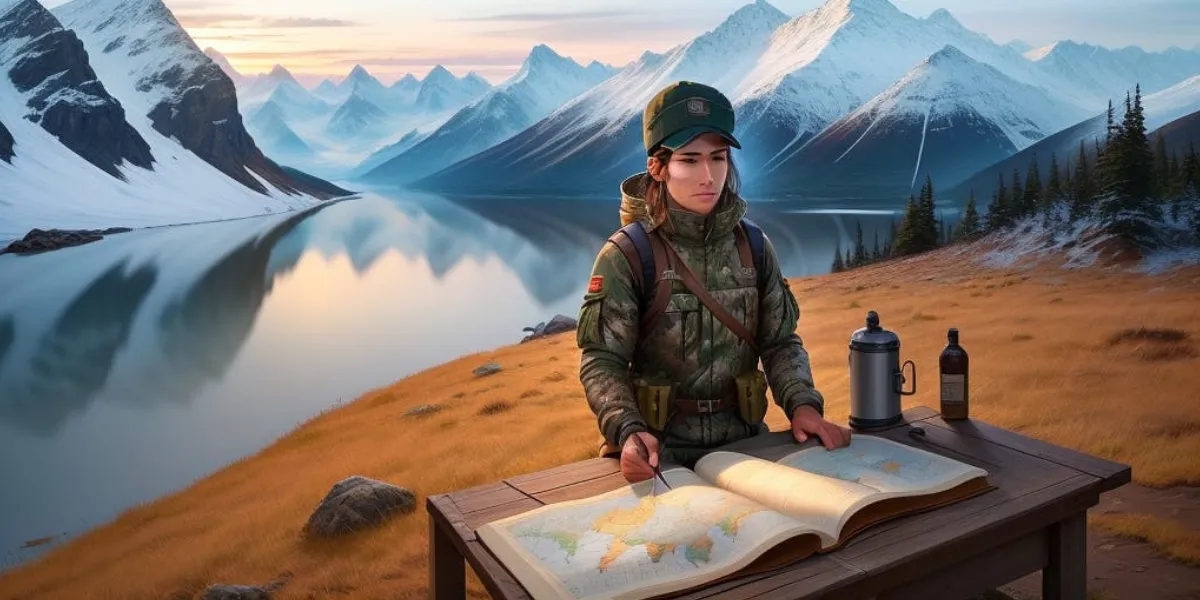
Survival Hunting Tips: Mastering Wilderness Survival Skills for Hunters
Are you skeptical about your ability to survive in the wilderness? Worried that you won’t have enough food to sustain yourself? Don’t fret. Survival hunting is a skill that can be learned and mastered, giving you the power to provide for yourself in any situation. In this article, we’ll delve into the basics of survival hunting, teaching you effective trapping and fishing techniques, essential tools to have, and how to utilize natural resources. Get ready to embrace your liberation in the wild.
Key Summaries
Familiarize yourself with hunting essentials and primitive survival techniques to stay healthy and fit in the wild
Learn and practice bushcraft and survival skills. These will enhance your hunting abilities and keep you alive
Learn to make use of natural resources and materials for shelter, navigation, and crafting tools
Be patient, observant, and knowledgeable about hunting regulations in your area. Hunting can be dangerous
The Basics of Survival Hunting
To ensure your survival in the wilderness, you must familiarize yourself with the essentials of hunting for sustenance. In a wild, outdoor situation, hunting becomes a crucial skill for your survival.
The first tool you should consider is a bow. A bow allows you to hunt from a distance, giving you an advantage over your prey. You can craft a simple bow using materials found in the wilderness, such as wood and string. See this page for a full guide on how to create a bow in the wild.
Next, you’ll need a knife. A well-made knife is indispensable for skinning and preparing your catch. Invest in a quality knife that can withstand the harsh conditions of the wilderness.
When hunting, it’s important to be patient and observant. Take time to study the behaviors and habits of the animals you wish to hunt. This will increase your chances of success.
Additionally, learning about bushcraft and survival techniques will greatly enhance your hunting skills. Understanding how to build traps and camouflage yourself can make a significant difference in your ability to gather food.

Effective Trapping and Fishing Techniques
To effectively trap and fish for sustenance in a survival hunting situation, you must learn practical techniques and strategies. Here are three essential techniques to help you secure food in the outdoors:
Snare Traps: Snaring is a highly effective method for trapping small game like rabbits and squirrels. Construct a snare using a sturdy cord and a small loop. Place it along a game trail or near a known food source. As the animal passes through the loop, it will tighten around its neck, ensuring a quick and humane capture.
Fishing with a Stick and Spear: When near a water source, fishing can provide a reliable source of protein. Use a sharpened stick as a makeshift spear and wait for fish to swim by. With a swift and accurate thrust, you can impale the fish, securing a meal for yourself.
Navigating Hunting Seasons: It’s important to be aware of hunting seasons and regulations in your area. During hunting season, larger game like deer may be more abundant due to increased hunting pressure. Take advantage of this by setting up traps or hunting near their feeding areas.
Essential Tools for Survival Hunting
When engaging in survival hunting, it’s crucial to have the right tools for the job. In order to successfully hunt and procure food in the wilderness, you’ll need a few essential tools.
The first tool you’ll need is a reliable weapon. Whether it’s a rifle, bow and arrow, or even a spear, having a weapon that’s capable of taking down an animal is essential.
You’ll need tools to process the animal once it’s been killed. A sharp knife is indispensable for skinning, gutting, and butchering the animal.
Another important tool is wood for crafting a fire. Fire isn’t only vital for cooking the meat but also for warmth and signaling for help if you’re lost in the woods.
Outdoor skills are also essential. Knowing how to track animals, set traps, and navigate through the wilderness will greatly improve your chances of finding food.
Lastly, don’t forget to pack a survival kit with items like a compass, first aid supplies, and emergency food rations, in case your hunting trip takes an unexpected turn.
With the right tools and skills, you’ll be better equipped to find and secure edible meat in the wild.

Shelter Building and Wilderness Navigation
Once you have procured your food through successful hunting, the next step in surviving in the wilderness is to build a shelter and navigate through the vast wilderness. Here are three essential tips to help you with shelter building and wilderness navigation:
Shelter Building: When it comes to shelter building in outdoor survival, improvisation is key. Look for a sturdy tree or a large rock formation to serve as your anchor point. Using your rifle or a hook, gather branches and foliage to create a lean-to shelter. Make sure the shelter is well-insulated and protected from wind and precipitation. If you can find a nearby stream or lake, use a log to create a makeshift bed to keep you off the cold ground.
Navigation: Wilderness navigation can be challenging, especially when weather changes and landmarks become obscured. Always carry a compass and a topographic map of the area. Take note of natural features such as rivers, mountains, and valleys to help orient yourself. Pay attention to animal trails and signs, as they often lead to water sources and human settlements. If you become lost, follow a stream downhill, as it will likely lead to civilization.

Utilizing Natural Resources: Baskets, Bark, and More
You can make use of natural resources like baskets, bark, and more by crafting them into functional tools for survival. When it comes to survival hunting, utilizing the resources around you is crucial.
Baskets, made from materials like reeds or vines, can serve as storage containers for the food you gather or the tools you create. They can also be used for carrying water or collecting wild edibles.
Bark, from trees such as birch or cedar, can be harvested and fashioned into containers as well. By carefully removing the bark in a way that doesn’t harm the tree, you can create bowls, cups, or even shelter coverings. This not only saves you energy and time, but also allows you to work with materials that are readily available in your surroundings.
When choosing which natural resources to utilize, it’s important to consider the context of your situation. For example, if you’re in a forested area, bark may be more abundant than woven materials for making baskets. By understanding the resources available to you and thinking creatively, you can make the most of what the environment provides, enhancing your chances of survival while engaging in the art of survival hunting.
Frequently Asked Questions
What is survival hunting?
Survival hunting is the act of hunting for food and resources in a wilderness survival situation. It involves using various hunting techniques to catch and kill animals for sustenance.
What skills do I need to master survival hunting?
To master survival hunting, you need to have skills in navigation, using a knife, making fire, and identifying wild edible plants. These skills are essential for surviving in the wilderness and successfully hunting for sustenance.
How can a knife be helpful in survival hunting?
A knife is an essential tool for survival hunting. It can be used for a variety of purposes such as cutting branches for building shelter, preparing game for consumption, and self-defense against potential threats in the wilderness.
How do I navigate in a survival hunting situation?
Navigating in a survival hunting situation can be challenging, but there are several methods you can use. You can navigate by using landmarks, the position of the sun, or by using a compass if you have one available.
What are some essential items to have in a survival hunting kit?
Some essential items to have in a survival hunting kit include a knife, fire starter, water purification tablets, a compass, a first aid kit, and a signaling device such as a whistle. These items will help you survive and increase your chances of being found in a search and rescue situation.
Can I hunt with a bow and arrow in a survival hunting situation?
Yes, hunting with a bow and arrow can be an effective method of hunting in a survival situation. The bow and arrow allow for stealthy hunting and can be used to take down larger game animals.
How do I start a fire for survival hunting?
Starting a fire is crucial for survival hunting as it provides warmth, cooking ability, and a means to signal for help. You can start a fire by using natural materials such as dry leaves, twigs, or a fire starter tool.
What should I do if I do not have any hunting equipment?
If you do not have hunting equipment, you can improvise by making weapons and traps using materials found in the wilderness. For example, you can make a spear by attaching a sharpened stick to a long branch.
Is it safe to eat wild edible plants during survival hunting?
It is safe to eat wild edible plants, but you must be knowledgeable about which plants are safe to consume. Some wild plants can be poisonous, so it is important to learn how to identify them correctly.
How long can a person survive without food in a survival hunting situation?
The exact time a person can survive without food depends on various factors such as individual health, temperature, and activity level. Generally, a person can survive for several days without food, but it is important to find a source of sustenance as soon as possible.
Conclusion
So there you have it, the basics of survival hunting. Remember, when it comes to trapping and fishing, practice makes perfect. With the right tools, such as a sturdy knife and a reliable compass, you’ll be well-equipped for any wilderness situation. And don’t forget to utilize nature’s resources, like baskets and bark, for additional survival techniques. Did you know that 70% of survival hunters rely on trapping as their primary source of food? It’s a skill worth mastering for anyone venturing into the great outdoors.

